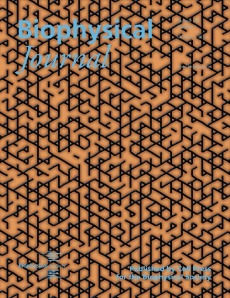
1) How did you compose this image?
The basic network structure was randomly generated using MATLAB code that was utilized in our research, and then exported into Photoshop to add the details, highlights, and colors.
2) What prompted you to submit your image as cover art?
Lead author Dr. Jesse Silverberg actually has a background in graphic design. In fact, in his life before physics, he spent a year in college studying 2/3D design, color theory, and basic drawing. After realizing the difference between art-for-the-sake-of-art, and art-for-the-sake-of-selling-a-product, Jesse left school and took some time off before reapplying for a physics program at another university. In 10 years of undergraduate and graduate studies, he’s taken every opportunity to exercise his artistic inclinations, including submitting images as journal cover art.
3) How does this image reflect your scientific research?
The image of a randomly generated elastic fiber network was produced using a simulation that was an integral part of our research on articular cartilage, a biological tissue that enables smooth joint motion in mammals. On one hand, it helped us better understand experimental measurements, while on the other, it helped distill a very complex biological tissue into its essential physical components.
4) Can you please provide a few real-world examples of your research?
Roughly 1/3 of adults will get osteoarthritis in their lifetime. This debilitating disease causes joint pain and has few therapeutic options. One promising opportunity lies in the field of tissue engineering, wherein artificially grown tissue transplants are used to replace damaged and degraded cartilage. However, there have been significant challenges in making plausible candidates for transplant surgeries because the mechanical properties of these artificial constructs are inferior when compared to the natural material. Our work provides insights on the microscopic origins of cartilage’s mechanical properties and offers guidance on what steps could be taken for tissue engineers as they work towards viable therapeutic alternatives.
5) How does your research apply to those who are not working in your specific field?
In addition to tissue engineering applications, our work also offers the first example of how the theory of rigidity percolation can be used to describe natural biological tissues. This is exciting because it provides a new lens to view these complex and often hierarchical materials with a relatively well-understood microscopic model. 6) Do you have a website where our readers can view your recent research?
https://cohengroup.lassp.cornell.edu/research.php?project=10020
- Jesse L. Silverberg, Aliyah R. Barrett, Moumita Das, Poul B. Petersen, Lawrence J. Bonassar, and Itai Cohen